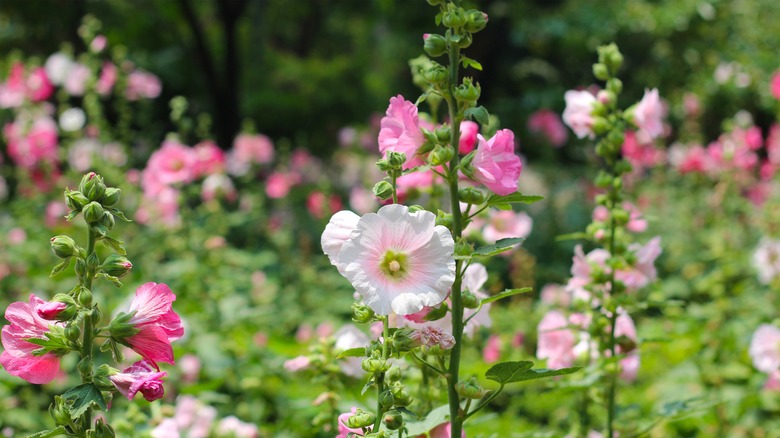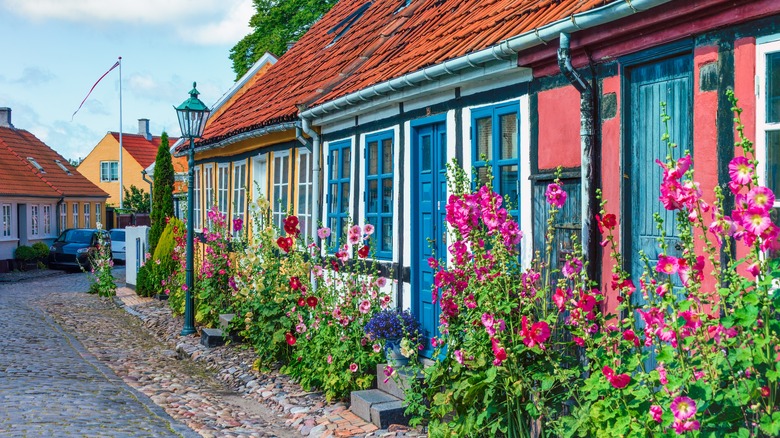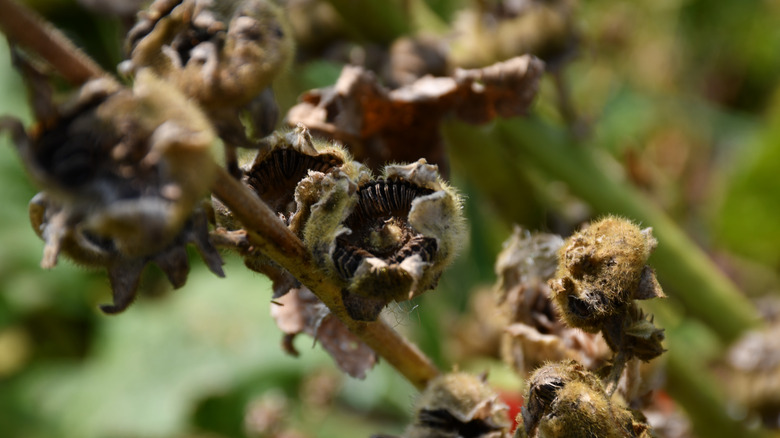When You Should Plant Hollyhock Seeds For Beautiful Blooms
Hollyhocks are easily one of the most beautiful cottage garden flowers around. Rising high above the garden in gorgeous spikes covered in large colorful flowers, reaching up to 4 inches wide, hollyhocks are truly the star of the show in any garden. Since hollyhocks are biennial, there is some confusion as to when is the best time to plant hollyhock seeds. Essentially, there are two schools of thought: one recommends planting hollyhock seeds in the fall, letting them overwinter and germinate in the spring, and the other recommends starting the seeds indoors about 6 to 8 weeks before the last frost date. It comes down to personal preference, as both methods are effective.
It also depends on your USDA hardiness zone, how long your growing season is, and your preference for starting seeds. The best way to start seeds indoors is by making sure you have the right materials and space on hand. However, it can get messy quickly since you're dealing with soil, water, seed trays, etc. If you want to skip the mess and directly sow your seeds outdoors, it's pretty straightforward and less hands-on than rearing hollyhock seedlings indoors. Many gardeners get mixed up when deciding what seeds you should start indoors vs outdoors. However, the most important thing to consider is the plant's growth habit. Hollyhocks have a deep taproot, so while you can start them indoors, you want to use a deep pot and get them outside ASAP.
What are hollyhocks?
Hollyhock, alcea rosa, is a jaw-droppingly beautiful flowering plant related to hibiscus and cotton in the mallow family. Originally native to Asia, hollyhock is one of the first flowering plants to be imported from another region of the world and grown for its ornamental value in the West. Because of its long garden history in Europe, it is regarded as an "old-fashioned" garden staple. However, it is making a resurgence!
Growing to heights of almost 9 feet in some cases, the hollyhock makes a gorgeous plant to grow in the back of a garden or along a fence line. With long spires covered in a magnificent red, pink, purple, and dark blue display, the hollyhock is truly a one-of-a-kind flowering plant. They attract all sorts of pollinators to your garden and add a unique architectural element, as no other plant has the same growth pattern. The flowers open up at the base and then proceed up the stem. They prefer full sun and well-draining soil. Although they're biennial, putting a rosette of leaves the first year, growing deep taproots, and then flowering the following year, they are sometimes viewed as perennials since they readily reseed themselves.
When to plant your hollyhock seeds
If you live in a temperate area where it freezes over and snows in the winter, you can either direct sow your seeds in the fall or start your seeds indoors a few weeks before your last frost date. If you choose to direct sow your seeds, you don't have to wait for the fall. Essentially, you want to spread the seeds on top of the soil where you want your hollyhocks to grow. Do not add soil on top, as they need sunlight to germinate. You can sow your seeds up to a week before your last frost date and leave them in place over the winter. When spring arrives, check on your hollyhock seeds and water them occasionally, checking on them to ensure there is not too much competition around them as they sprout, as this can impede their growth. Remember to be patient as they are very slow at this stage in the growing process.
To start your hollyhock seeds indoors, start them about 6 to 8 weeks before your last expected frost date. However, since hollyhock has a deep taproot, you want to ensure that they are put in the ground as soon as they show true leaves and outgrow their containers. To avoid damaging the taproot, use tall individual pots for each seed. They can be placed outside two weeks after the last frost.


